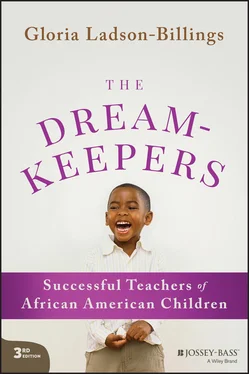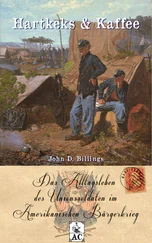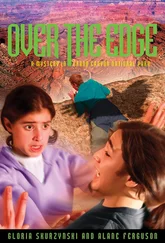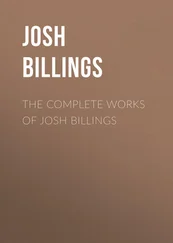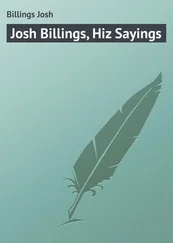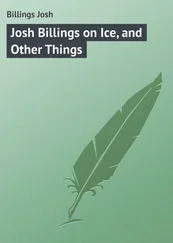Despite these tendencies among New Century students, there are some exciting opportunities for using technology in teaching and learning. For example, the use of live Twitter ®feeds referenced above can be a way to get students who are shy or reserved to participate more fully in the classroom. Instead of seeing mobile devices as distractions, culturally relevant teachers encourage students to use their devices to find information and become more engaged. Several of the teachers I have observed since the initial Dreamkeepers study taught me the importance of allowing students to create a class playlist. In these classes, teachers set the criteria and encourage students to select songs for the playlist. The criteria may demand, no songs with racist, sexist, misogynistic, or homophobic lyrics. The teachers begin each class session with a song or two from the class playlist as students arrive. They indicate that students arrive on time (just in case their song is the one that plays that day) and settle more quickly. Sometimes the song selected becomes a place to begin a conversation or represent a connection to what the class is studying. Teachers working with New Century students believe that mobile devices are another tool similar to textbooks, pens, pencils, and paper. However, it is a classroom tool that students are unlikely to forget.
The approach to integrating the cell phone or mobile device into the classroom stands in stark contrast to schools and classrooms where cell phone use is prohibited. Rather than forcing students to put their phones in a box as they enter the classroom or chastising students for responding to a cell phone notification, culturally relevant teachers are often looking for ways to make the cell phone a good resource for students. In an era when schools can come under attack from deranged people who seek to shoot people in schools, the availability of a cell phone may mean the difference between life and death. The job of a culturally relevant teacher is to help students use their phones for informational and educational purposes.
COVID-19 has made most educators aware of the need to become more proficient with technology. Platforms like Zoom ®, Microsoft Teams ®, and Google Meet ®have become necessary for maintaining teaching and learning. In a recent visit to a high school in Baltimore I spoke with students about how they felt about remote learning. I fully expected students to complain about remote learning; however, one student declared, “I really love remote learning.” When I inquired as to why he felt that way he replied, “Because when they (the teachers) get on my nerves I just turn them off!” I then asked what happens when he does that; he told me, “Oh, the teacher sometimes calls me to see what happened and I just say, ‘I had Internet connectivity problems!’” What that student was telling me was that because of remote learning, I now have command of my learning. I can choose when to engage and I can choose when to disengage without being sent to the principal for insubordination.
The technologies are allowing students to develop their own learning opportunities. A few weeks ago, a high school student reached out to me to do an interview on his podcast. At the end of the interview, he told me he was not looking forward to returning to face-to-face schooling because he was learning so much via his podcast. I checked his episode list and saw that he had interviewed some of the city’s most interesting people—policymakers, activists, businespeople, scientists, entertainers, and others.
Hip-Hop as a Hope—The Rise of Youth Culture
The second important aspect of today’s classroom is the role of youth culture. As I pointed out in the Foreword, my early work failed to acknowledge the importance of youth culture. I suggested that I ignored youth culture because I was observing elementary classrooms where the students were more likely to be consumers of youth culture but not producers of it. That was the purview of adolescents. However, youth culture has a tremendous impact on how secondary students experience schooling and like technology, it is a mistake to ignore it.
New Century students do not fit neatly into the rigid categories of race, class, gender, or national origin that their parents and teachers have relied upon to make distinctions and create hierarchy. Their sports heroes and heroines include LeBron James and J. J. Watt, Gabby Douglas and Brianna Stewart. They listen to Drake, Post Malone, Dua Lipa and Cardi B. They are more likely to endorse same-sex marriage and can separate out hip-hop traditions. Where baby boomers and their parents hear it all as “noise” (just a reminder, our parents called rock & roll and rhythm & blues “noise”), they point out that there are important differences between L’il Wayne and Immortal Technique, L’il Kim and Ana Tijoux. They know that this culture they have created is a mash-up with permeable boundaries. They are simultaneously sacred and profane with deep religious convictions and an embrace of all things secular. MCs like Lupe Fiasco and Omar Offendum do not hide their Muslim faith. They work in local, national, and global contexts—with music and film about Trayvon Martin and Arab Spring. Hip-hop filmmaker Eli Jacobs-Fantauzzi makes global hip-hop films like “Inventos: Hip-hop Cubanos” and “Home Grown: Hip Life in Ghana.”
Scholars like Chris Emdin (Teachers College, Columbia) and his former student Edmund Adjapong (Fordham University) and Ian Levy (Manhattan College), Marc Lamont Hill (Temple University), Elaine Richardson (Ohio State University), H. Samy Alim (UCLA), A.D. Carson (University of Virginia) are all part of a group of scholars who have incorporated hip-hop in their teaching and community activism. They understand that youth culture is vital for connecting with and engaging a new generation of students. The very thing we want students to do with text can be done with hip-hop. For example, we can take the lyrics of a hip-hop piece and ask students to explain the song’s plot, theme, and setting. Or we can ask students to read a piece of history and then create eight bars that explain a historical event. In New York Chris Emdin works with students in science to create hip-hop pieces to explain science concepts. Students can remember rules of mathematics by putting them to a catchy beat, “You know a fraction is a part of a whole. I said a fraction’s just a part of a whole!”
I began working actively with our campus’ award winning First Wave Hip-Hop Scholars Program in 2014. Prior to then I served as a member of the program’s advisory board but by 2014 the students were clamoring for more course offerings in education and hip-hop. 2 I agreed to craft a course we called “Pedagogy, Performance, and Culture” to serve both First Wave Scholars and students generally interested in hip-hop and education. Our class started with about 20 students and our format was to meet once a week for 2.5 hours in class followed by another 1.5-hour public lecture. With a little support from the Office of Multicultural Arts Initiatives (OMAI) we pulled together a series of weekly lectures comprised of artists, scholars, and entertainment businesspeople to take on topics like race and culture, the art world, education, how business can determine what art we have access to, and of course, hip-hop. The public lecturers also came to our class before their public lectures and gave the students a chance to be one on one with some very talented people. Before each public lecture I designated one member of the class to introduce the speaker with a poem or spoken-word piece. In every case the lecturers, as well as the general public who attended the lecture, were amazed by the talent of our students.
On the first day the course was to begin I received a call from a local television reporter saying, “I heard you’re going to be teaching a course about hip-hop and education. I’d like to interview you about it.” I agreed to the interview and at the conclusion of the interview the interviewer asked if he could visit and film in the class. I hastily dashed off an email to the students and asked people who objected to email me back. I did not receive any emails but when the class met, I began by asking if anyone objected to having a reporter and camera person present. No one objected (after all, half the class were performers) and shortly after starting the class the reporter and camera person arrived. The next day the segment ran on our local news broadcast.
Читать дальше
